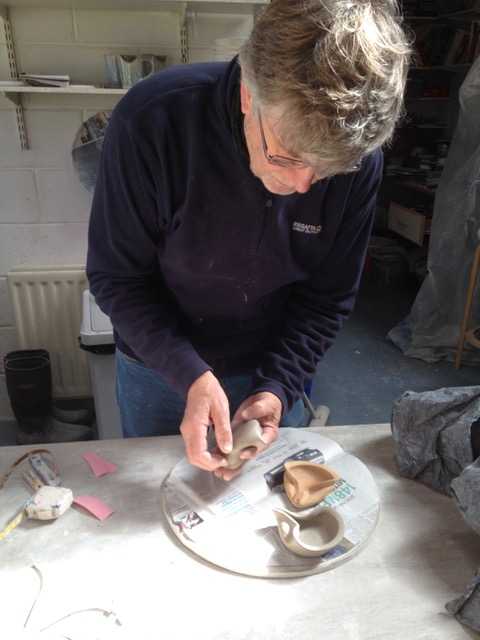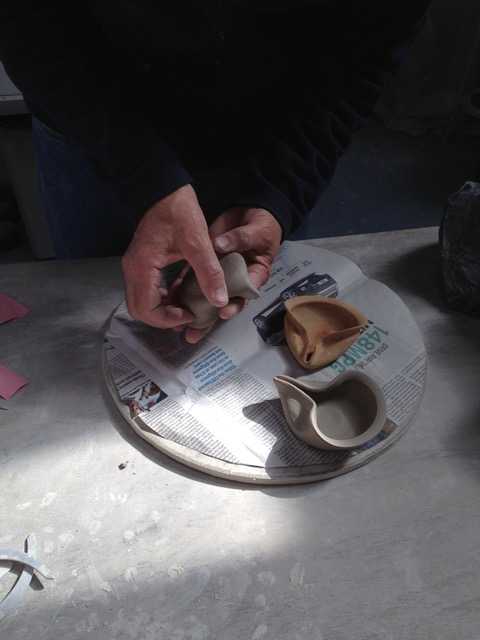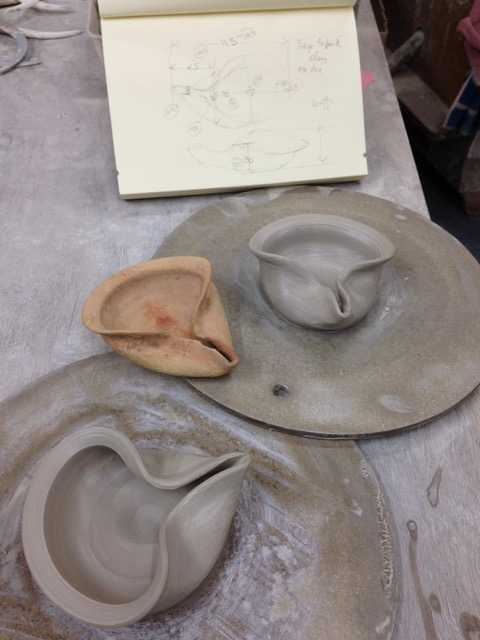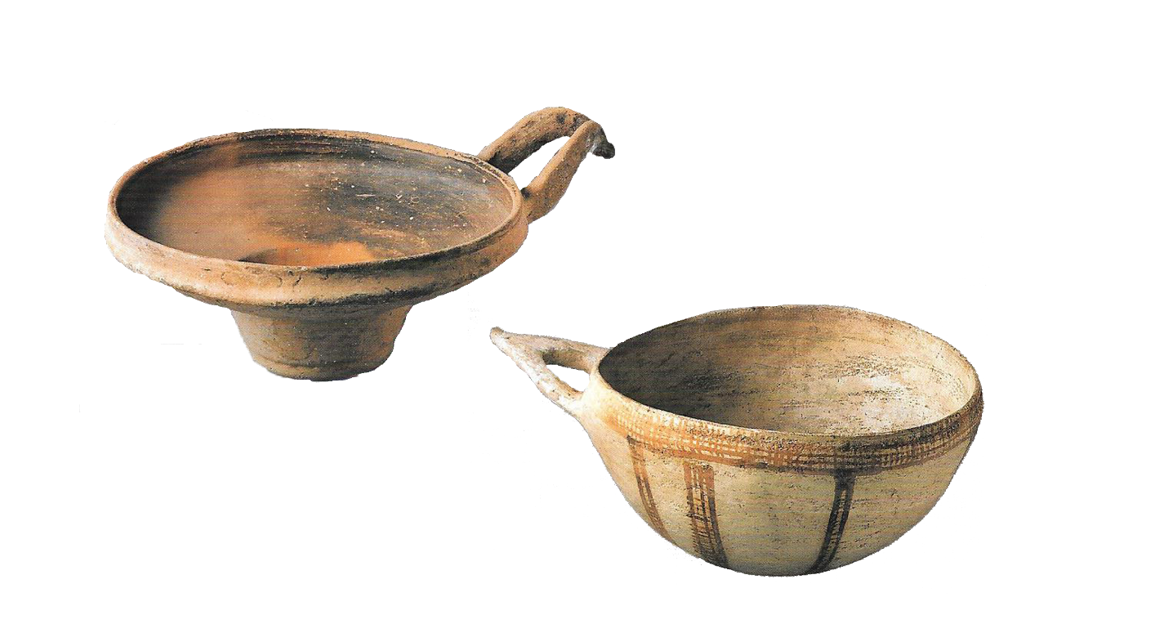This week, Dr Eleri Cousins of the School of Classics enlighten us about the lamps of the Bridges Collection.
The days are almost at their shortest here in Scotland – the sun set at 3:34pm today! – so what better time of year to think about illumination in the ancient world? The Bridges Collection contains a small but fascinating series of lamps, ranging in date from the Hellenistic to the Byzantine periods, and this week we’ve had them out of their cases for James Bezjian to scan, as part of the Through a Glass Darkly project. As far as I’m concerned, oil lamps are some of the most compelling archaeological objects there are. They are part of something that is still so fundamental to day-to-day life, the lighting of our homes, but they also represent such a *different* lived experience to the one that we have today. How many of us have ever been in a room lit only by candle- or lamp-light? Rooms like that are DARK – it’s hard to see who is at the other end of them, it’s hard to do any task, like reading or embroidery, that requires good eyesight, and to light a room with oil at all well for any length of time would have been expensive. Looking at lamps makes us realize that for most of human history, lighting – and thus active life – after dark would have been a luxury.
But lamps allow us to think not just about the lighting, but about a whole range of issues to do with life in the ancient Mediterranean, from domestic life to long-distance trade, from craftspersonship to fuel sources. They allow you to hold so many things about the Greco-Roman world right there, in the palm of your hand.
To prove that I’m not just lamp-mad, but that they really are amazing objects, let me take you through some examples from our collection.
Check out this lamp, for example, which probably dates to the Hellenistic Period. What astounds me about this object is the deceptive complexity of its design.
At first glance this looks like actually a very simple object, compared to the elaborately decorated, closed lamps we get in other periods. But actually several different techniques went into making it, all of which required a lot of skill. You can tell from the shape of the rim and the walls, and from the horizontal lines visible on the walls both inside and outside that it was first thrown as a bowl-shape on a potters’ wheel. While the clay was still quite wet, the potter pinched one end of the bowl to create the distinctive narrow nozzle, where the wick would have stuck out when the lamp was lit. Getting that pinch right must have taken both skill and practice; modern potters who have worked with our collection to recreate some of our objects have found it really hard to figure out the exact knack needed to create this shape.
If you turn the 3-D model upside down, you can see that the potter finished off the lamp by repeatedly scraping the bottom of the bowl to create a flattish base. By the looks of the marks, this was probably done when the clay had dried out a bit to become ‘leather-hard’ before firing. You’ll often see similar marks on the walls of other pottery forms, where the point was to ‘burnish’ the clay to make the walls shine once the pot was fired.
Even though this lamp is hand-made, it was still made according to a particular pattern, a learned technique, the knowledge of which would have been passed between craftspeople – as we can see from the fact that the same shape and the same ‘pinch’ appears on other lamps from the eastern Mediterranean, including in fact a second one from the Bridges Collection:
‘Types’ like this are bread-and-butter for archaeologists, because they can help us to pinpoint when and where an object belongs. (Think about how the shape of a plastic Coca-Cola bottle in the US differs from one in Europe – or from a glass one from the 1920s.) But especially with handmade objects, types like this don’t just represent networks of trade, or of production: they also represent networks of knowledge, of training, and of skill. In this case, it was a knowledge which lasted for a long time: pinched-nozzle open-saucer lamps like this are known from the Bronze Age through the Hellenistic period – making them actually quite hard to date!!
Looking at this lamp, we can see not only the details of its production, but also of its use. These lamps would have been filled with oil, most likely olive oil, which would have served as a fuel source for the lit wick. If you look carefully around the pinched nozzle, you can see it has been both blackened and reddened from heat. That’s a really common pattern on lamps, and shows the effect that use would have had on the object. You can see the effect even more clearly on this third lamp, which dates to the Roman period:
This lamp was made with a mould rather than with a wheel – mould-made lamps are very common in the Roman period, and would have enabled (relative) mass-production of objects. Since they could be mass-produced, we see Roman lamps being traded and moving around in great numbers across the Roman world. This particular lamp is decorated with an eagle (very Roman!), while another Roman mould-made lamp in the collection has vegetal decoration in the form of a pomegranate branch:
At first glance, mould-made lamps seem less individualized and more generic than hand-shaped ones. But it’s important to remember that in the ancient world, even ‘mass-produced’ objects had a human touch. On the inside of mould-made lamps, you can sometimes see the marks of fingerprints: a reminder that it was a real person who pressed the clay into the mould, almost two millennia ago.



